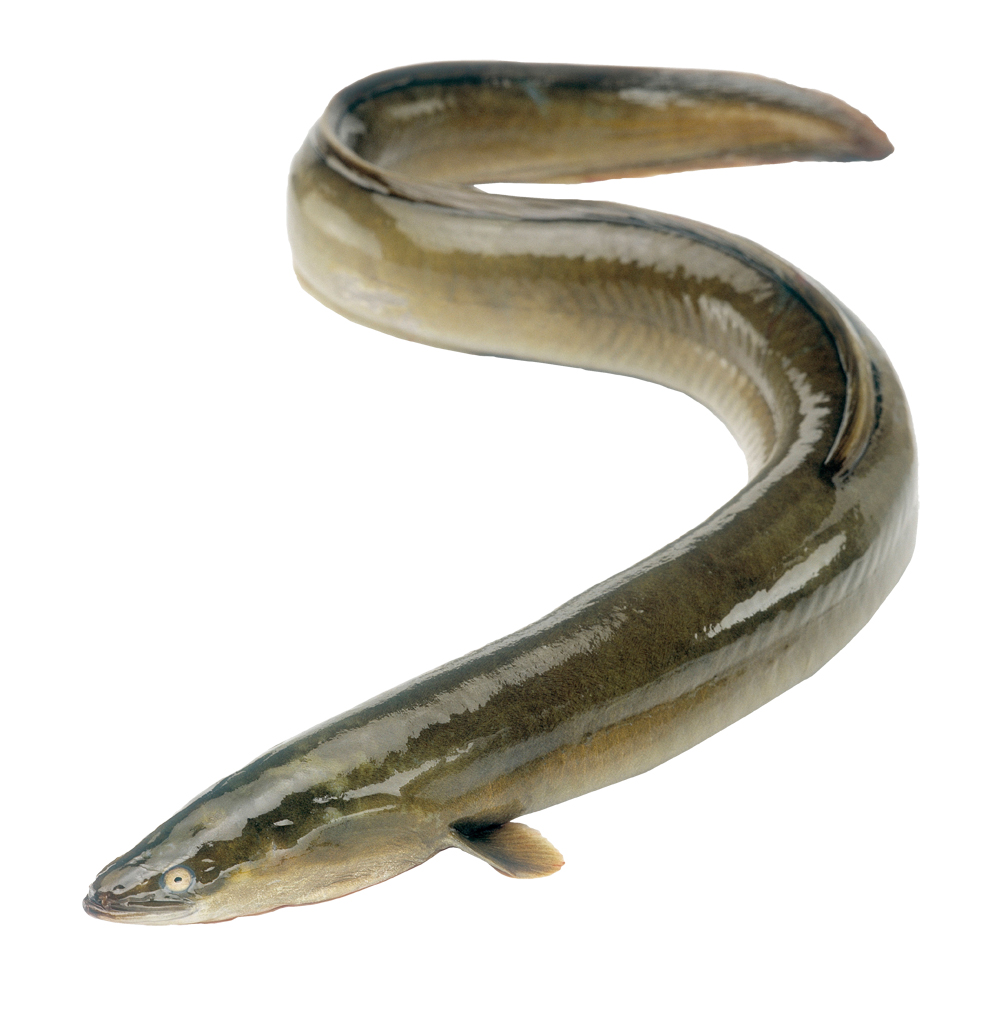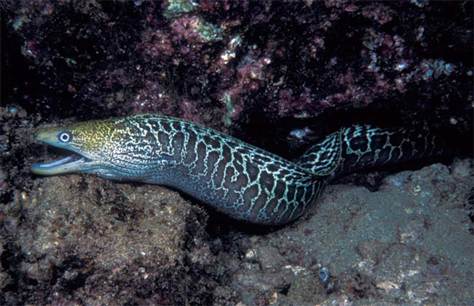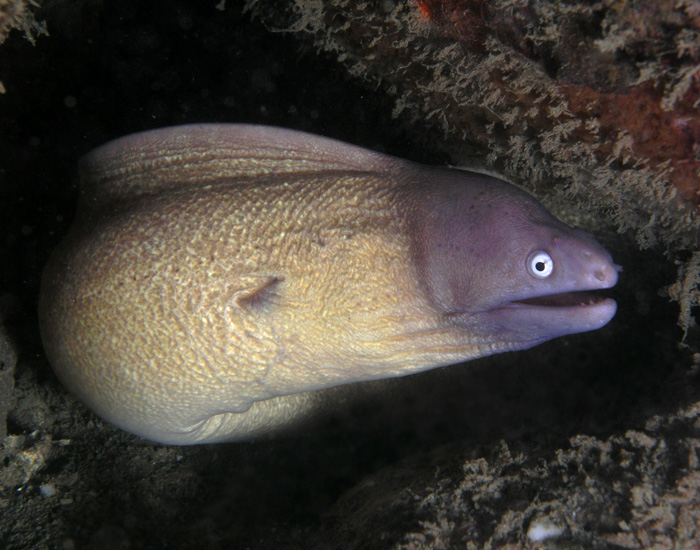
Eel is the name given to any fish that possesses an elongated, snakelike or ribbonlike body form. Although many eels are closely related to each other as members of the order Anguilliformes, other eel-like fishes are not closely related to this order, an example of convergent evolution of body form.
Freshwater Eels
The most commonly encountered and familiar eels are the freshwater eels of North America (Anguilla rostrata) and Europe (Anguilla anguilla). Both species are members of the same family, the Anguillidae. For many years the life cycle of these eels, which are commonly encountered in freshwater ponds and streams, remained shrouded in mystery, and egg-bearing females and early juveniles were never encountered. In the last half of the twentieth century, however, the story of the eel's life cycle has become better known, and it is a remarkable tale. All of the eels in North America and Europe are spawned in an area of the southwestern North Atlantic that is known as the Sargasso Sea. Fromthere the larval eels, which are known as leptocephalus larvae, are carried by the North Atlantic currents including the Gulf Stream, to the shores of North America and Europe. The leptocephali bear little resemblance to the adult eels; they are long, ribbonlike, and transparent. Upon arrival at the coastlines of North America and Europe, the eels metamorphose into the more familiar eel-like adult form and penetrate freshwater rivers and streams. Eels also have been shown to travel through underground streams into seemingly isolated ponds and lakes. They spend most of their adult lives in such freshwater systems. Upon reaching sexual maturity, the eels return to the Atlantic Ocean, and during this journey they undergo another metamorphosis. Guanine deposits in the skin give the eels a silvery appearance, as opposed to their usual dark olive color, the eyes enlarge, and their physiology changes in order to cope with the new demands of living in the ocean depths. Upon entering the ocean, the eels become deep-water fishes, and are very rarely seen as they return to spawn in the Sargasso Sea. How these fish manage to navigate to, and locate, their spawning grounds in the Sargasso Sea from freshwater ponds and streams while traveling in the ocean's depths is completely unknown. For years, there has been speculation among scientists that the two species of North American and European freshwater eels aremembers of the same species and are randomly scattered by the ocean's currents to North America and Europe. Recent genetic studies have suggested, however, that the two groups may at least be separate breeding populations if not actually separate species. Nevertheless, much remains to be learned about the life histories of these remarkable animals.
Moray Eels
Another type of eel commonly encountered by divers and snorkelers is the moray eel, a member of the family Muraenidae. These eels typically inhabit holes and crevasses in coral reefs. They lack pectoral fins and are often brightly colored and patterned. Some species, such as Gymnothorax, have impressive, fanglike teeth and feed on reef fishes; others have blunt, crushing teeth and feed primarily on invertebrates. Although morays have a sinister reputation, in general they are inoffensive to humans and will bite only if provoked by the intrusion into their burrows of fingers, which they may mistake for an octopus. At some dive sites, resident moray eels have been semitamed and are hand-fed and handled; however, such treatment occasionally results in the handlers being bitten. Studies have demonstrated that morays are hermaphroditic, starting their mature life as males and later becoming females. A few species are synchronous hermaphrodites, possessing both male and female reproductive organs at the same time.
Eel Facts
Classification:
Kingdom: Animalia
Subkingdom: Bilateria
Phylum: Chordata
Subphylum: Vertebrata
Superclass: Gnathostomata
Class: Osteichthyes
Subclass: Actinopterygii
Superorder: Teleosteii
Order: Anguilliformes
Suborder: Anguilloidei
Families: Anguillidae (freshwater eels, one genus, two species);
Muraenidae (moray eels, four genera, six species); Moringuidae
(spaghetti eels, two genera, four species); Synaphrobranchidae
(cutthroat eel); Congridae (conger eels, four genera,
four species); Nemichthyidae (snipe eels, two genera, two
species); Myrocongridae, Muraenesocidae (pike eels, one genus,
three species); Heterocongridae (garden eel); Ophichthyidae
(snake eels, two genera, three species); Illyophidae;
Simenchelyidae (snubnosed eel); Serrivomeridae (two genera,
two species); Cyemidae (deepwater eel)
Geographical location: Worldwide, in temperate and tropical
freshwater and marine systems
Habitat: Highly variable, from freshwater ponds and streams to
open ocean, coral reefs, and ocean bottom
Gestational period: None; as in most bony fishes, fertilization is
external and the larval eels develop as plankton in the water
column
Life span: Variable and frequently unknown
Special anatomy: Elongate, snakelike or ribbonlike body forms;
pelvic fins and supporting skeleton are generally not present
and pectoral fins and skeletal pectoral girdle are also missing in
some forms; typically have dorsal, caudal, and anal fins fused
together to form a single fin extending along the dorsal surface,
around the tail, and onto the ventral surface; gill opening is typically
small and located low on the body; body form is specialized
for squeezing into cracks or crevasses, burrowing on soft
bottom substrates, and occasionally for a pelagic existence,
swimming in the open waters of the ocean
Other popular Animals
Photo Gallery of - Eel








 Animalia Life
Animalia Life